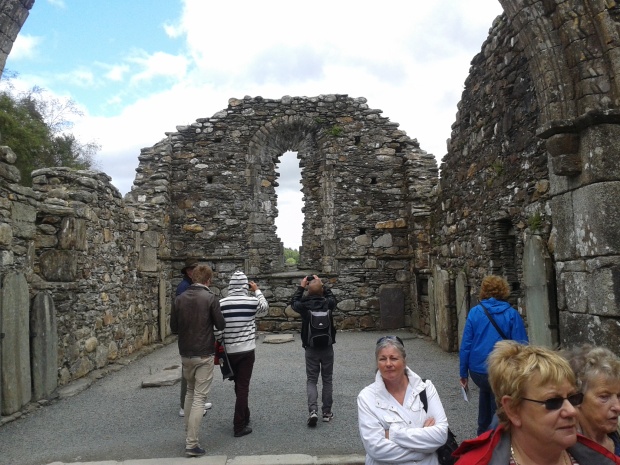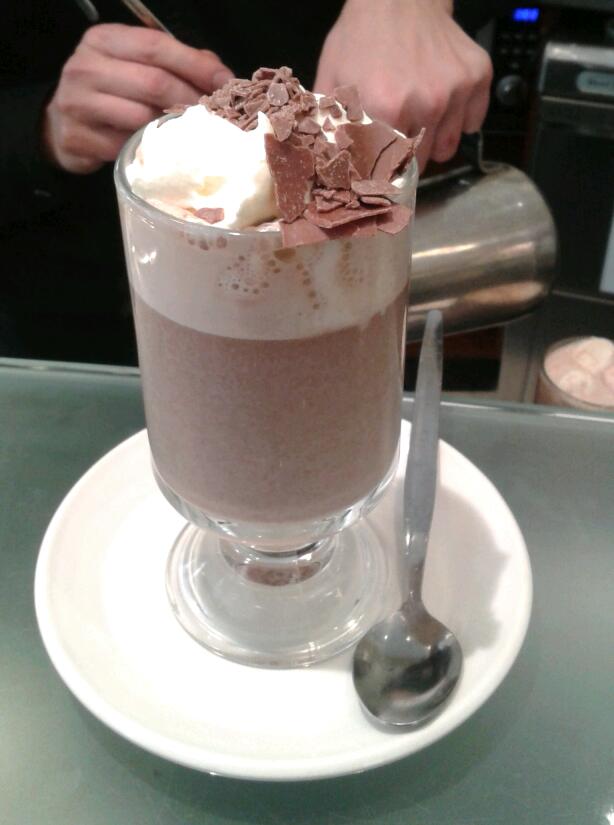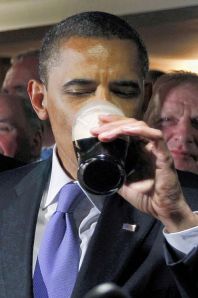Holy Catholic Ireland, Batman!

Ireland has a blasphemy law.
Take a few minutes to digest that.
Because whatever you think it means, it means.
I had thought that my wife had got it wrong or that she had mistranslated what her mother had said or it was simply another my-mother-in-lawism.
But no.
‘We’ve got the Blasphemy Referendum on the same day as the presidential elections, you know,’ was the way the conversation went between my better half’s mother and her self.
‘What?’ the wife had responded incredulously, and somewhat confusedly. Her mother could have literally meant anything. Is it blasphemy to her to have another referendum? Do the Irish wish to place the Catholic Church back into a place of centrality in the constitution and Irish society and so therefore are about to commit blasphemy against all that is decent and good by swearing loyalty back to the holy Catholic Poobah of Rome in all his piousness? Or did my beloved simply mis-hear her own mother’s accent? Was my m-i-l sick of making decision through plebiscite? Was it with a heavy sigh that she said ‘we’ve got that blasted referendum’ over re-nationalising sewage treatment or something?
She clarified.
‘Because blasphemy is illegal, you know. You could be fined €25,000. €25,000!’
And a few moments of knowing acknowledgement of the Irish character of old and a google search or two confirm the laughably theocratic thing you think “blasphemy referendum” means, is what it means. The Irish are about to go to the polls to decide whether blasphemy should still be illegal in Ireland.
Which is interesting.
When I was I wee slip of a study abroad student at the tenderly legal age of 21, I left my native America and set foot on The Emerald Isle’s shores for the first time.
I had been raised Catholic but was not very good at practicing, well, at what I had been raised. But something vaguely spiritual awakened in me in the land of saints and scholars, land of my forbears, holy, holy hosanna in the highest, holy Catholic Ireland where St Patrick ran out the symbolic pagan serpents, and I thought, why not, for shits and giggles, why not see a real, devotional Catholic, pious country as it celebrates the most divine panus angelicus, the consecrated mysteries, the inner meaning of which always seemed to elude me (question as a child: why was Jesus keeping his heart secret?)? So I did.
I had been raised ‘Irish American’.
I have reconciled myself to the fact that ‘Irish American’ counts as a culture. I don’t think it entitles you to call yourself Irish, but it does require you, it seems, to buy into the stereotype of the Catholic Ireland myth, a place second only to Rome in its Catholicity, a land where the aisles up to communion are paved with potatoes and gold (neither of which are indigenous to Eire).
I had somehow not been privy to the many scandals to do with the Catholic Church, child abuse, rape, molestation and rank hypocrisy.
I had not been privy to Ireland’s secular awakening during the economic boom in the 90s known as the Celtic Tiger, a time when the Irish fairly quickly shirked off the shadows of groping priests and the shackles of roman collars.
I had also never seen Father Ted.

So my vision of a pure and Jesused Ireland remained untainted on a Sunday morning when I wandered into a church in the suburban village of Maynooth, just west of the capital, expecting at least some of the mass to be in Latin, expecting at least three miracles before the second reading, the whole church bursting with song and several hours of Irish people soberly and self flagellatingly meditating on the most divine.
An Ireland that was happy to give the Catholic Church a special place in the Irish state enshrined in the constitution of 1937.
An Ireland that would ban the joyously scathing satire of Joyce, Beckett and O’Casey (to be fair, it’s been a while since there’s been that scale of censorship).
An Ireland, bless it, that would write, and keep on the books a law that would sanction the the act of blasphemy (whatever that means and whoever decides what it means) with a fine of up to €25,000.
An Ireland in which a man from Ennis in County Clare would lodge a complaint about actor and writer Stephen Fry who, in an interview with Irish Radio and TV personality Gay Byrne, questioning the existence/benevolence of a god who would allow obscene amounts of children to suffer in horrible ways.
An Ireland in which the same man, clearly finding himself at a loose end, called up the police to find out if they could please update him on the status of his complaint two years later as he would like to know when they’d be prosecuting that awful auld Stephen Fry fella to the full extent of the law.
An Ireland, in sum, that pays gravely serious attention to its religion.
What transpired was a mumbled gathering of assorted worshippers, garbling through their prayers at speed, barely an intelligible ‘amen’ in the house, whilst all kept their coats on (in America’s puritanical Catholic Churches we were always taught to make ourselves comfortable in the house of god), a muted, dark and glum acknowledgement of a shared religious upbringing, with barely a bit of eye contact and not a note of music struck by a single vocal chord.
Far from genuflecting in front of our lord on the way out, the almighty was lucky if he got a curt nod as the becoated parishioners scurried out like rats from a sinking ship and blessed themselves as some hurried ritual to superstitiously ward off the holy cooties they might have contracted within doors, with Christ, as Beckett writes, ‘all crucified in a heap.’
It was not, suffice to say, the ossified holy Catholic Ireland that Irish America venerates. It was not an Ireland had time for a church steeped in constant controversy from the Magdalene laundry revelations to ‘illegitimate’ babies buried in mass graves by sisters of ‘mercy’ in whose care young mothers were entrusted bearing up against the then shameful badge of a pregnancy out of wedlock.
Tomorrow, the Irish go to the polls to vote for their president, a largely symbolic figurehead role (another discussion for another day with another host of issues) but the more important vote will be a kind of symbolic confirmation.
If Irish voters do as polls indicate they will, after years of far more important referenda embracing marriage equality in defiance of a homophobic past and bravely embracing reproductive rights in defiance of a chauvinistic and misogynistic past, across the country, they will be confirming their faith in themselves and humanity and liberal, progressive values, and away from a failed moribund model of morality.
In contrast to the cynical votes that brought about Brexit and President Trump, it will be an optimistic vote for the future. And for Ireland, simply a sign of the times.
So I say again, with less ambiguity, Ireland has a blasphemy law.
Soon it will not.
Praise be.
Following in the Steps of Saints and Scholars: Glendalough, County Wicklow
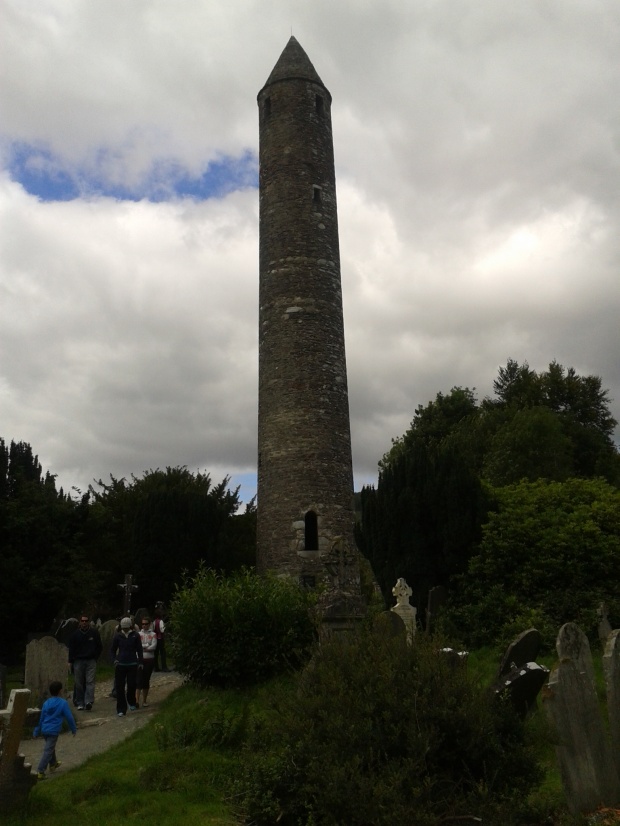
Try to scale that, marauding tourists… I mean vikings! The Round Tower in Glendalough. No one really knows how the holy brothers got in or out.
As I’ve said before, 2013 has officially been dubbed The Year of The Gathering, for the duration of which Ireland will play host to the whole diaspora of its sons and daughters come back to see the homeland, to reunite with family they didn’t even know they had, to disabuse themselves of illusions to do with leprechauns and to generally appreciate all about the land that disproportionately produces world-class poets such as Patrick Kavanagh, Yeats, Joyce, Beckett, Michael Longley, Louis Macneice, Paul Durcan, Paul Muldoon, Derek Mahon, Seamus Heaney (insert name of your favo(u)rite here) and many others besides.
But let’s face it. In order to see the best that Ireland has to offer, you need to rent a car. I don’t think I’ll be saying anything controversial or intensely debatable when I assert that Ireland’s public transport system is neither cheap nor efficient. Its urban rail system, the DART (Dublin Area Rapid Transit) is one of mechanized transportation’s great misnomers and I’ve taken train journeys down to Kerry that involved long and tedious connecting coaches from Mallow in Cork (I don’t know so don’t ask). But that is Ireland’s pace and part of its peculiar and particular charm.
But thanks to the Celtic tiger of the 90’s and noughties, Ireland’s road system has undergone some massive modernization, especially around the cities, and is a general pleasure to drive around, basking in the rural fields of green flanking either side of some fairly efficient, if a tad congested thoroughfares (I know those who have experienced them will take this as irony and I’ve been in the traffic jams too, but they’re not that bad).
And what rewards to be reaped from driving 10-15 minutes in any direction outside the capital, from Brittas Bay on the Wicklow coast to the passage graves of the Boyne Valley, from Bray Head south of Dublin to Howth Head to the North.
Such as this gem just 40 minutes south of Dublin as you whip round the quiet country roads, Glendalough (literally, “Glen of Two Lakes”). Glendalough is where the famed sixth century Irish ascetic, St. Kevin, sought refuge from his followers and is said to have slept in a bronze age cave at the edge of the mountain. Who can blame him for wanting to stay in this place? On a fair day, such as the one we visited on, views anywhere in Glendalough are stunning.
The gently rolling brooks and streams make for peaceful passing of a lovely day.
The rural splendor can only possibly elevate and inspire the soul.
And at the same time it is a place steeped in the spiritual heritage of this island, featuring several different stone churches near the hiking trail on the site, dating back as early as the 10th century. Oddly enough, there were marauding American tourists that were over for the Notre Dame vs. Navy taking place at the Aviva Stadium. My compatriots were a tad loud, brash and somewhat badly dressed, but generally pleasant. Just as I was feeling on the verge of an epiphany amidst the graves and medieval stone structures, I heard a voice, as if it ‘buzzeth in mine air’ from a rotund lady in sunglasses just to my left saying, ‘WHAT’S THAT, CHER? THAT’S RIGHT. MEET YOU BY THE CHURCH.’ Ah the high dulcet tones of the North Atlantic twang. That, as I have said many times before, is our charm. We don’t mind how much like sore thumbs we stick out; we will blunder confidently on in hopes of a miracle… or a little guidance.
Notwithstanding being surrounded by my countrymen, there is a blanket-like tranquility in the air, a permeating peace and beauty, that leaves no wonder as to why the Irish landscape has inspired such mysticism in its poets.
Well worth the day if you’re going to be in Ireland or could make a very good reason to make the trip.
For car rental, Enterprise’s Dun Laoghaire office just south of Dublin cuts right through all the minutia and hassle of holding insurance on cards and all that palaver. There are a couple nice pubs and restaurants in Glendalough, but you’d be better off following the signs north again towards Avoca in Kilmacanogue for a lovely plate of food and a soothing stroll along the grounds.
Go. Be inspired! Feel the rhythm of your feet along the ground informing your consciousness in verse. Come back and tell me about it!
Three Things I love About Dublin
In the great words of the Monty Python crew, “And now for something completely different.” I’m coming down from the politics-junkie high of election season as we all slowly exhale and put the presidential pugilism of the last month or two especially behind us. I’m not actually of the belief that, as social animals, anything we do is completely divorced from the political/social sphere, but I did think I’d get back to travel this week, which is not so overtly political.
To that end, inspired by fellow blogger Marina from Hercules Gets a Passport, whose blog post on San Francisco has motivated me to want to one day explore that wonderfully sunny looking city that was once a political hotbed of flower-power and beat poetics in the 60s, I’ve decided to write about a city I love, Dublin. Marina’s blogpost was for a competition and, whilst the competition is closed, I like the idea of taking three things you know and love about a city and exploring them.
I spent four years in Dublin (actually close to four years, but I have to say something to explain my accent). It is a city rich with a history of wit, of poetic souls, and of artistic temperaments. This year, Ireland celebrates 2013, The Year of the Gathering, a year-long celebration of Irish cultural identity in which particular emphasis is placed on welcoming back the sons and daughters of Eire from the far and wide diaspora to come back home and celebrate their roots. So, just in time for The Gathering, I thought I’d take you on a very quick mini-tour of my Dublin and hope to entice you to join in the celebrations in some way this year.
Lunch in Govinda’s
Who, outside of Ireland, outside of Dublin even, could conceive of a popular Hare Krishna vegetarian restaurant close to the city center? Who could further guess that such a cafe would serve top-notch food at fairly reasonable prices? Every year, at least once, we make our pilgrimage to Govinda’s for lunch in town. Warm, friendly staff will pile your plate high with steaming lasagne, the most perfect sag paneer I’ve yet tasted and generally comforting peppery, spicy potatoes, vegetables and assorted dollops of scrumptiousness to fill you with virtuous goodness for the rest of the afternoon and possibly the evening. Having spoken to the knowledgeable staff before about the topic, I now know that there are Govinda’s restaurants in cities throughout the world. We’ve been to the one in Toronto which was supposed to be pay what you like but was closed for a festival during out visit, and still periodically frequent the London Govinda’s, which has good food and a more accurate representation of Thali plate dining. But nothing beats the Irish Govinda’s on Aungier Street for a welcoming, relaxing ambiance, generosity of portion size and quality of cuisine.
Swing by Butler’s for a Hot Chocolate after lunch
Butler’s is a Dublinian institution, without a doubt the best hot chocolate and the best chocolate to be found anywhere in Ireland; rich, decadent, warming the cockles and mussels of one’s heart, the piece de resistance is the little sweet Butler’s presents to you on the saucer, which you dutifully drop and mix into your drink. Great place to get gifts to bring back home, meet, reunite and chat over warm, creamy, frothy cocoa.
Take a Walk on the Wild Side… Otherwise known as The North Side
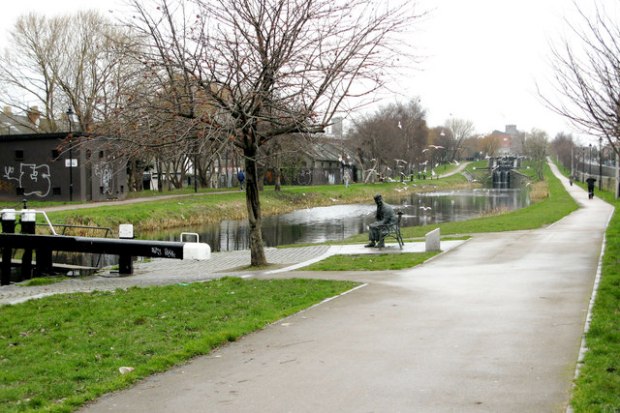
The Royal Canal in Lower Drumcondra, Dublin (photo from http://www.geograph.ie)
Years ago, working at a school in one of the poshest neighborhoods in South Dublin, Ballsbridge, I certainly heard my fair share of Northsider jokes (What separates us from the animals? The Liffey. Ha ha ha ha), but I also always found something genuine and beautiful and full of character about this gritty, underrated half of the city. I lived on Clonliffe Road, near the Gaelic Football and Hurling Stadium, Croke Park. We used to get checked for tickets coming back from Tesco with our shopping and the excitement and buzz of the atmosphere was unparalleled.
James Joyce, in Portrait of an Artist as A Young Man has his hero Stephen Dedalus claim that Drumcondra is “where they speak the best English,” but something about Joyce makes me think that, though he was clearly no nationalist, his sympathies laid with Stephen and the local pride he took in the North side. It is also a place that will afford you, with a brisk or leisurely stroll, some of the finest period architecture the city has to offer. Neither is it without its simpler pleasures, for at the end of your sojourn down this thoroughfare, you will find Fagan’s pub, Ireland’s former Taoiseach, Bertie Ahern’s local, a fine establishment in which to sit and relax with a pint of Arthur Guiness’ best and time to ponder and philosophize as Dublin cannot fail to inspire you to do.
Closer to Barack than Berlin
Several weeks ago, after I had got back from spending the end of the summer in Ireland, I blogged about native Irish wit and the ability of our Hibernian cousins to take something that has become commonplace and squeeze it with a fresh twist of something subtle, unexpected, and intelligent. There is something of the same spirit in the slogan that Obama (I’m going to say he did it, likely as not it was one of ‘his people’ but I’m just going to pretend) coined or rather gave new life to through translation into Irish last year on his state visit to trace his family’s Irish roots to Moneygall in County Offaly.
Not to be outdone by HR the Q in her visit four days earlier – the first by an English monarch to The Republic of Ireland, when King George visited in 1911, it was still part of the UK – when she opened her speech in Dublin with “A Uachtaráin agus a chairde (President and friends)”, Potus closed his speech “as gaeilge” with the now famous “Is Feider Linn” (Colloquially, “Yes we can!” Say it with me, IS-Fayder-lin).
Like the French, the Irish like it when foreigners at least make an effort to speak the language that has been so neglected for so long by its own people and the Irish certainly like a president who is willing to come back home to find his roots. A cynic might say that he knows how to pay homage to the old Kennedy Irish American lobby, which there may be a bit of, but I think he did genuinely really enjoy himself and he certainly endeared himself to the people of Ireland by going one better than Dubya and sipping some of the black stuff in Moneygall local Ollie Hayes Pub.
There’s a perpetual debate in Ireland about whether the nation’s policies and politics in general should be closer to Europe or the North Atlantic, succinctly put as “Are we closer to Boston or Berlin?” I think it’s clear how the Irish felt on this occasion.
What I didn’t realise until my recent visit is that the above image is now doing the rounds on postcards all over Ireland, commemorating the occasion with the phrase, “Tall, Dark and Had Some”. Irish wit.
Especially with the Romney campaign starting to look desperate, I think it’s worth popularizing the Celtic version of Obama’s tagline and chanting it at rallies as it is so indelibly associated with hope and possibility. Like some secret victory code. You start. Go ahead. Is Feider Linn. Is Feider Linn. Is Feider Linn…
Guilty Pleasure Tourism: The Viking Splash Tour
 |
| The Dolly with The Trolley (image taken from http://www.awaycity.com) |
| Grand Canal Dock Basin, fisheye view |
 |
| Image taken from http://www.coffeyfilter.com |




